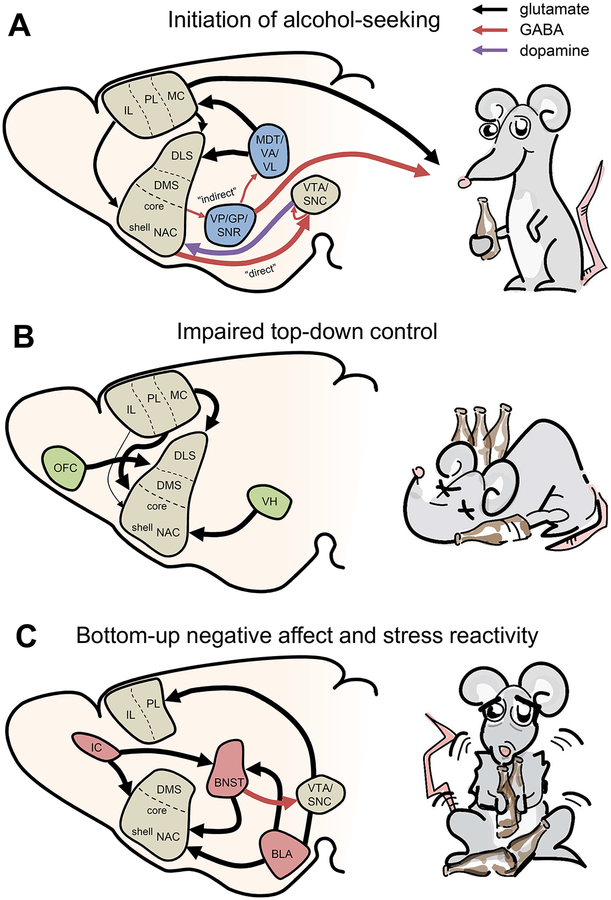Figure 1.
Simplified neurocircuitry underlying normal and pathophysiological ethanol seeking. (A) Basic motor circuit supporting initiation of ethanol seeking. Dopaminergic midbrain areas project to the dorsal and ventral striatum to promote motivated behaviors. Dopamine promotes the activation of dopamine receptor subtype 1 (D1)-expressing “direct pathway” medium spiny neurons (MSNs). D1 MSNs send inhibitory afferents back to the VTA and SNC, where they inhibit local GABAergic neurons and disinhibit dopamine neurons. In contrast, striatal dopamine release inhibits D2-MSNs, thereby relieving inhibition on the pallidum. Decreased output from the pallidum disinhibits the thalamus, the striatum, and the MC. The MC and pallidum provide the major outputs of this circuit to the brainstem to promote the initiation of ethanol seeking. (B) Impaired top-down control and excessive compulsive ethanol seeking. Dysregulation of the cortical inputs onto the striatum is believed to underlie the loss of control observed in AUD. Decreased function of the IL PFC inputs to the NAC shell and enhanced activity of the VH and PL PFC inputs are thought to mediate excessive motivation to seek ethanol as well as reinstatement. Alterations in the OFC projections to the dorsal striatum are also believed to play a part in habitual, compulsive-like ethanol seeking. (C) Enhanced bottom-up stress reactivity in AUD. The extended amygdala plays a key role in the regulation of emotions and stress response, particularly in the context of ethanol seeking. Excitatory projections from the BLA to the PFC, NAC, and BNST may each be important in promoting stress-induced reinstatement. The BNST is composed of both excitatory and inhibitory projection neurons that modulate the function of the NAC and also the dopaminergic midbrain areas. Finally, the enhanced activity of the IC is thought to be involved in stress-related ethanol seeking, and its projections to the NAC and BNST may be particularly important for these effects.

